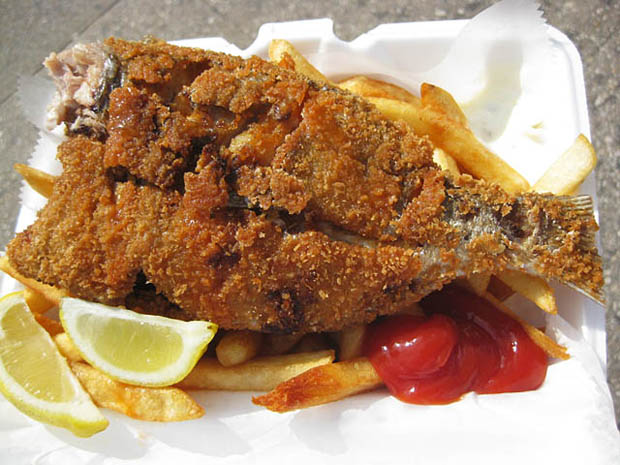Porgy
![]() [dropcap]I[/dropcap]t’s a terrible name for a perfectly fine fish. Porgy sounds like something you don’t want in the bottom of your boat, much less on a plate for dinner.
[dropcap]I[/dropcap]t’s a terrible name for a perfectly fine fish. Porgy sounds like something you don’t want in the bottom of your boat, much less on a plate for dinner.
Well, it will come as no surprise to anyone who has consumed expertly filleted porgy, be it baked, fried, broiled, even poached, that the fish is one of the better eating species in Long Island Sound. Indeed, some claim it is the best. (For me, it runs a close second to a perfectly grilled bluefish.) A silvery fish about the size of a hand with the fingers spread, porgies have prominent scales, They are rather flat and have a lot of bones so filleting them can be difficult unless they are unusually large. The solution is to just remove the scales and cook them whole.
Maybe if the porgy went by another name like mini-mahi-mahi or poor man’s pompano, it might get the gustatory props it deserves; at least it would read better on a restaurant menu. Of course, it does go by another name, scup, the moniker favored up the line in Rhode Island and beyond. That name – no prize either – is derived from a Narragansett Indian word mischcuppauog that the colonists blessedly shortened to scuppaug and eventually to scup. How it came to be called porgy in these parts, I have no idea.
Names aside, porgies are one of the most if not the most important recreational fish species in the Sound. Its massive numbers support a large party boat fleet on both shores of the Sound. Connecticut-based party boats are allowed to let their patron take home 45 porgies on each trip. That, combined with the individual recreational angler take (10 fish per trip), is a crushing draw on the population, yet porgies seem to be as numerous as ever.
Porgies travel in schools, arriving in May with the sand eels and sticking around until late August. The average fish weighs between 1- and 3-pounds.
Because their hookups are fairly subtle, it’s best to fish for them with light tackle that transmits every vibration up the line. Be delicate. Snapping the rod tip up or horsing the fish in can result in pulling the hook out of the fish’s mouth.
While porgies will go for almost any type of bait – clams, worms, spearing or squid – some anglers like to use killies, because their darker color shows up better against the light sandy bottom when porgies hang out. On dark, rocky bottom structure, spearing works well.
The best time to fish for porgies depends on whom you ask. Some fishermen swear by the low incoming tide while others think the top of the flood is the time to drop bait. One thing is definite: The tide should be moving, one way or the other.
cwalsh@ctpost.com



